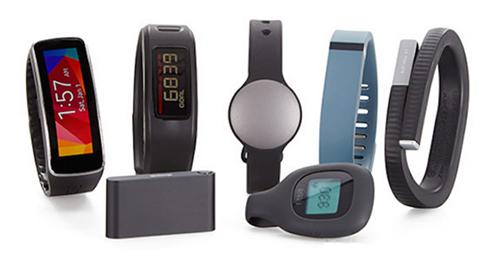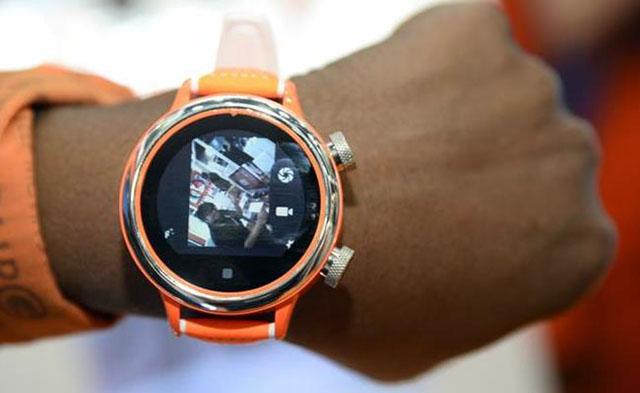You are here
Apple admits its smartwatch isn’t for everyone
By Los Angeles Times (TNS) - Sep 11,2016 - Last updated at Sep 11,2016

Photo courtesy of smosh.com
Two years ago, Apple Inc. executives made the case that anyone with an iPhone would be better off also owning the company’s new smartwatch.
But as many gadget buyers remain unsure about the usefulness of high-tech timepieces, Apple this week pitched its second-edition watch to a much narrower audience.
Workout and activity tracking capabilities surged to the front and center, taking over the spotlight from messaging features and customisable timefaces. The promotional video for the Watch Series 2 featured almost only athletes: swimmers, tennis and basketball players, cyclists, skateboarders and runners.
The shift in approach reflects some major technical changes. The Apple Watch Series 2 has built-in GPS — essential to athletes who don’t want to lug their phones on runs or bike rides — and is water resistant for use while swimming and surfing.
But establishing the Watch as a fitness tracker rather than a catch-all smartwatch serves a bigger purpose too, analysts said. Thanks to smartphones and popular devices such as the Fitbit, consumers now understand how devices can track steps and monitor sleep. Emphasising those features make the Watch a more familiar device than the revolutionary communications tool Apple touted in 2014.
The “ultimate device for a healthy life” is how Apple Senior Vice President Jeff Williams summed up the Watch at a media event Wednesday. Two years ago, Apple called the Watch its “most personal device ever”.
Apple showcased games, animated messages and other features on stage this week as well, but health and fitness underlined even some of those presentations.
“You get people into the Watch through the guise of fitness, but then you get people messaging and playing games,” said Jitesh Ubrani, research analyst at the data firm IDC.
Though Apple hasn’t released sales figures, analysts estimates upward of 12 million Watches have been sold since the original incarnation went on sale in April 2015. Some experts say the device suffered from an identity crisis. The device’s benefits weren’t clear and immediate for most.
“Personality disorder is what I would like to call it,” venture capitalist and Fitbit investor Om Malik told Bloomberg TV on Wednesday. “Until they figure that out, Fitbit has a clear lead and will maintain a clear lead.”
Sharpening the pitch for the Watch suggests Apple may be on its way to reining in aggressive ambitions and figuring out a clearer, albeit smaller, role for the device. Apple did not respond to a request for comment.
“There’s absolutely a refocus towards fitness,” Ubrani said. “It’s the low-hanging fruit.”
A faster version of the Apple Watch Series 1 will go on sale next Friday for $269, or about $80 less than the retail price at launch last year.
The Watch Series 2 starts at $369, including a set of wristpieces with unique colours and features designed in collaboration with Nike.
Sports-centric marketing campaigns around the Watch could spur more interest in offerings from Fitbit, Jawbone and other fitness tracker makers. Their wearables generally cost less and have longer-lasting batteries than Apple Watch. Their limited apps haven’t turned off consumers, who are satisfied with just having smartphone notifications pushed to their wrist, said Ray Maker, who runs the popular fitness-device blog DCMaker.
The competitors also work in tandem with Android smartphones; the Apple Watch only syncs data with iPhones. And data suggest Apple’s rivals have plenty of room to grow as a result. Only about 25 per cent of people who purchased a Fitbit online since the start of 2014 also bought an iPhone over the Internet, according to data from receipt tracker Slice Intelligence.
Running and cycling watch companies such as Garmin sell well among endurance sports enthusiasts, but they may lose sales to Apple if consumers find the Watch Series 2 more multi-functional, fashionable and fairly priced.
Some may continue to opt against the Apple Watch because other options are better tailored for harsh weather and rugged environments, Maker said. Another big problem for many athletes is the battery. The five-hour GPS battery life on the Watch won’t hold up for some marathon runners or any Ironman competitors.
“If you’re training for a marathon or a triathlon, it’s likely you’re going to want something that you know will get you to the finish line,” Maker said. The Apple Watch battery life is “well below virtually all fitness companies’ GPS watches today on the market”.
About 25 per cent of wearable devices sold last quarter were Fitbits, with models from Xiaomi, Apple and Garmin following in the low teens and single digits. Fitbit’s dominance is expected to continue through the holiday season in large part because demand has been for affordable, lower-tech fitness trackers, analysts said. In other words, for all the robust capabilities of Apple Watch, it might be the simple things that get consumers to consider it.
Related Articles
NEW YORK — Most fitness trackers can measure a lot: steps taken, heart beats, sleep quality and workout performance.That’s a lot of data, bu
Wearable computers like Google Glass and Samsung Galaxy Gear watch may not have caught fire yet, but that hasn’t stopped mobile game developers from rushing to create apps for the new devices, eager to seize what they hope is the next big moment in consumer technology.
Smartwatches don’t have to look ugly to be functional. Clothing and accessories designers are collaborating with engineers to produce computerised wristwatches that people will want to wear all day and night.


















